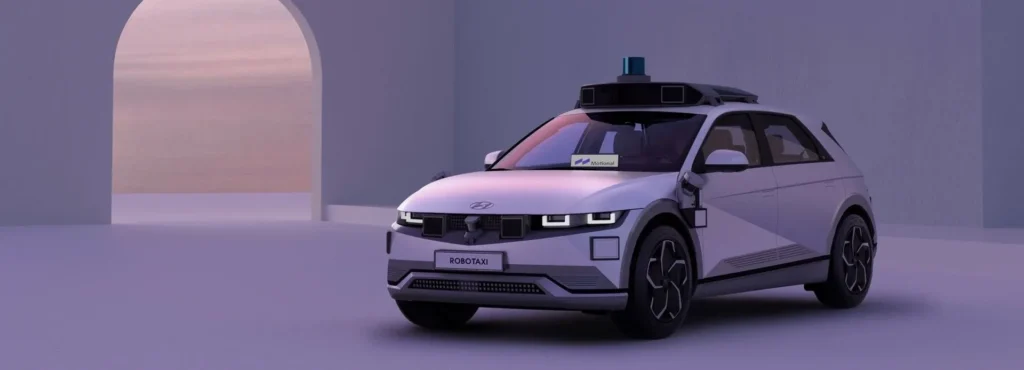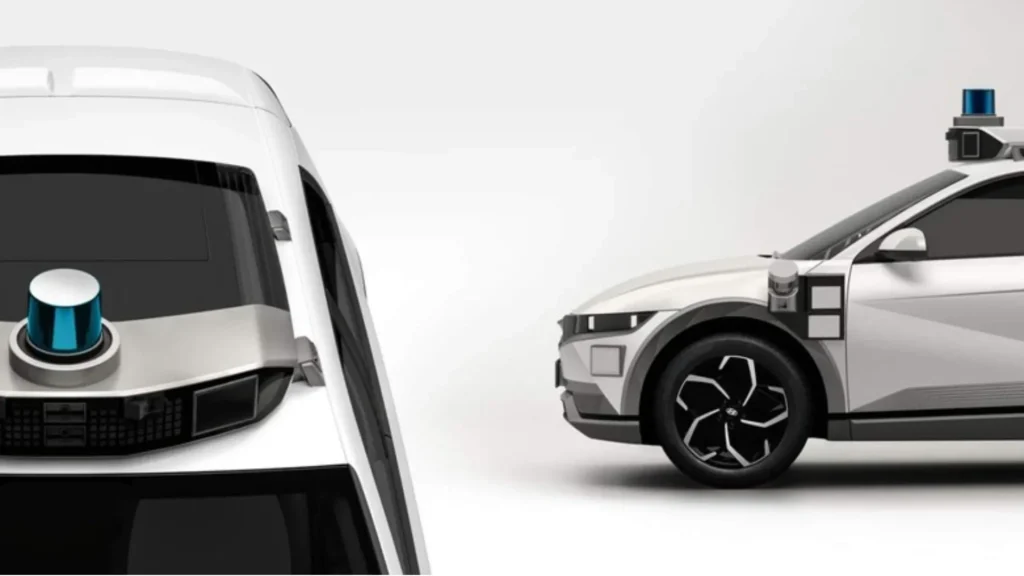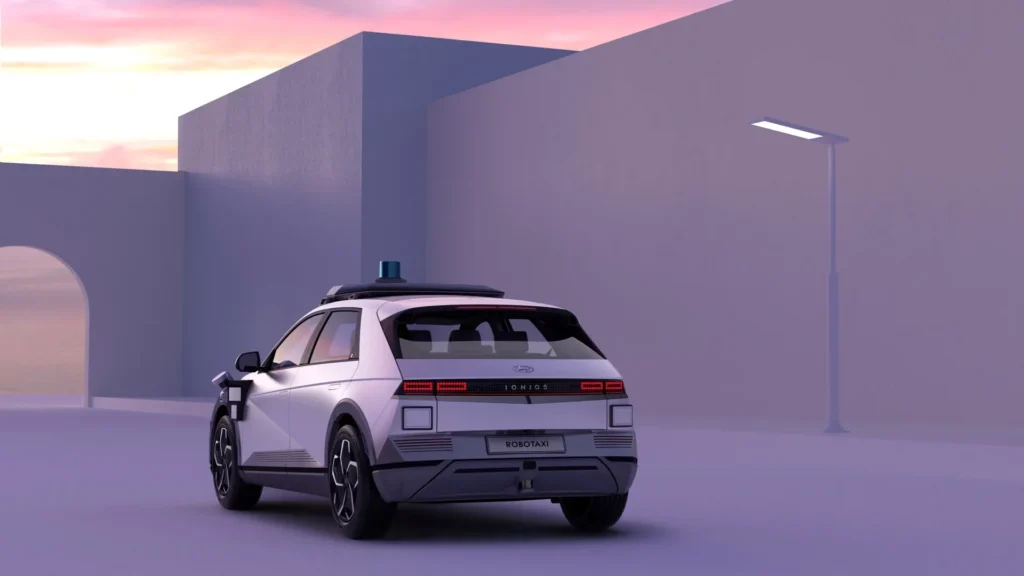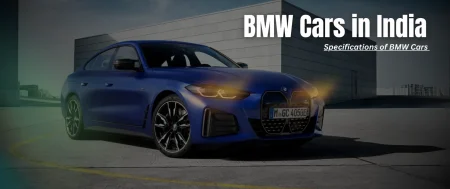Hyundai Self-Driving: Leading the future of autonomous mobility with cutting-edge technology and safety.
Table of Contents
Introduction
Ever wondered what it would feel like to sit back, relax, and let your car drive you to your destination? Hyundai is making that dream a reality with its innovative self-driving technology. As a pioneer in the automotive world, Hyundai has been investing heavily in autonomous technology, aiming to make driving safer, smarter, and more enjoyable. So, let’s dive into the world of Hyundai’s self-driving cars and see how this tech marvel is transforming the way we think about driving.



What is Self-Driving Technology?
Self-driving technology, or autonomous driving, refers to a vehicle’s ability to operate without human intervention. Using a combination of sensors, artificial intelligence (AI), and complex algorithms, these cars can navigate, follow traffic laws, and avoid obstacles. They “see” the world around them through cameras, LiDAR (Light Detection and Ranging), and radar systems that process vast amounts of data in real-time to make driving decisions.
Hyundai’s Journey into Self-Driving Vehicles
Hyundai, a global automotive leader, has gradually evolved from traditional combustion-engine cars to high-tech electric and self-driving vehicles. By partnering with tech giants and developing in-house expertise, Hyundai has carved a niche in the self-driving sector. The company has poured resources into Hyundai Mobis, its research and development arm, which plays a critical role in pushing the boundaries of autonomous driving.
Levels of Autonomous Driving
The Society of Automotive Engineers (SAE) defines five levels of autonomous driving, ranging from Level 0 (no automation) to Level 5 (full automation). Here’s a quick breakdown:
- Level 0 – No automation; the driver is fully in control.
- Level 1 – Driver assistance; basic features like cruise control.
- Level 2 – Partial automation; the car can assist with steering and speed.
- Level 3 – Conditional automation; the car can drive on its own in specific conditions but requires driver attention.
- Level 4 – High automation; the car drives itself in most scenarios but may need driver intervention.
- Level 5 – Full automation; no human input is required.
Hyundai’s Approach to Self-Driving Levels
Hyundai is mainly focused on developing Level 2 and Level 3 technologies that provide substantial autonomy but keep drivers engaged and attentive. With an eye on real-world functionality and safety, Hyundai’s self-driving cars are designed to enhance convenience and reduce driver workload rather than replace drivers altogether.
Key Features of Hyundai’s Self-Driving Cars
Hyundai’s self-driving vehicles come packed with innovative features that make driving safer and more efficient. Let’s take a look at some of these remarkable technologies:
Highway Driving Assist (HDA)
The Highway Driving Assist (HDA) system is a standout feature that keeps the vehicle at a safe distance from the car ahead, maintains a set speed, and even helps with lane changes on highways. This is perfect for long road trips where highway driving can be exhausting.
Smart Cruise Control (SCC)
Hyundai’s Smart Cruise Control (SCC) is an advanced form of cruise control that not only maintains a set speed but also adjusts to keep a safe distance from the vehicle ahead. It uses radar to gauge distances and make smooth, subtle speed adjustments to match traffic flow.
Lane Following Assist (LFA)
With Lane Following Assist (LFA), Hyundai ensures the vehicle stays safely within its lane by using camera sensors to detect lane markings. This feature is particularly useful on winding roads or in dense traffic, where it provides an extra layer of security by keeping the car centered.
Driver Attention Warning (DAW)
Driver Attention Warning (DAW) is a safety feature designed to monitor the driver’s behavior. If the system detects signs of drowsiness or inattention, it sends an alert, reminding the driver to stay focused. Think of it as a gentle nudge to keep you on your toes!
Remote Smart Parking Assist (RSPA)
Imagine arriving at a busy shopping center and not having to worry about parking. With Hyundai’s Remote Smart Parking Assist (RSPA), you can step out of the car and let it park itself. Using ultrasonic sensors and cameras, the car can safely maneuver into tight parking spaces without a hitch.
Hyundai Mobis and Autonomous Innovations
Hyundai Mobis, the company’s research subsidiary, is the powerhouse behind many of Hyundai’s autonomous innovations. From AI-powered sensors to real-time data processing units, Hyundai Mobis develops and tests advanced tech that powers Hyundai’s self-driving capabilities. This R&D focus ensures Hyundai remains a step ahead in the race for autonomy.
Benefits of Hyundai Self-Driving Cars
Hyundai’s self-driving cars offer a range of benefits:
- Enhanced Safety: With sensors and AI working in harmony, these vehicles drastically reduce the chances of human error.
- Improved Fuel Efficiency: Optimized driving reduces unnecessary acceleration and braking, making these cars more fuel-efficient.
- Greater Convenience: Features like HDA and RSPA relieve the driver from repetitive tasks, making travel more comfortable and stress-free.
Challenges Facing Self-Driving Technology
Despite its promise, autonomous driving faces several challenges:
- Technical Limitations: AI and sensors aren’t perfect, especially in extreme weather or unpredictable situations.
- Legal and Ethical Issues: Governments are still figuring out how to regulate self-driving cars, including liability and insurance.
- Social Acceptance: Not everyone is ready to embrace autonomous vehicles, and some people still prefer human-driven cars for a personal touch.
Hyundai’s Vision for the Future
Hyundai envisions a future where self-driving cars are seamlessly integrated into urban landscapes. Their goal is to achieve higher levels of autonomy, eventually progressing toward Level 4 and Level 5 autonomy in select models. Through partnerships with tech firms and a robust R&D strategy, Hyundai aims to lead the autonomous mobility revolution while prioritizing safety and user convenience.
Conclusion
Hyundai’s journey into the self-driving world is as exciting as it is transformative. With features designed to enhance safety, comfort, and fuel efficiency, Hyundai’s self-driving cars are not just about technology—they’re about redefining what driving means. Whether it’s highway driving, lane assistance, or smart parking, Hyundai is taking strides to make driving safer and more enjoyable. It’s clear that Hyundai is paving the way toward a more autonomous, sustainable, and connected future.
FAQs
What level of self-driving does Hyundai currently offer?
Hyundai offers Level 2 and Level 3 self-driving capabilities in its vehicles, with features like Highway Driving Assist and Smart Cruise Control.
How does Hyundai’s self-driving tech improve safety?
Hyundai uses AI-powered sensors, cameras, and radars to enhance road safety by minimizing human errors and assisting drivers in real-time.
Can Hyundai’s self-driving cars park themselves?
Yes, Hyundai’s Remote Smart Parking Assist (RSPA) allows certain models to park autonomously, even in tight spaces.
Is Hyundai planning to achieve full autonomy in the future?
Hyundai is actively working towards achieving higher levels of autonomy, with long-term plans for Level 4 and Level 5 autonomous vehicles.
How does Hyundai’s Driver Attention Warning work?
The Driver Attention Warning system monitors the driver’s behavior, sending alerts if it detects signs of inattention or drowsiness.





